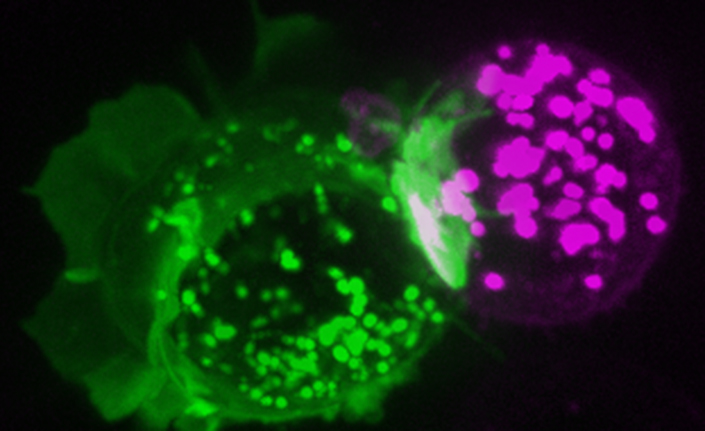“Programmed cell death protein 1,” or PD-1, has been considered a key target in cancer therapies since its discovery in the 1990s. The PD-1 protein functions as a kind of off-switch that prevents immune cells from attacking other cells. It is a “checkpoint” receptor that frequently appears on the surface of immune system cells.
Scientists created new medications to suppress PD-1 and activate the body’s immune system to combat cancer after its discovery, which transformed oncology and won a 2018 Nobel Prize. However, only a tiny percentage of cancer patients respond well to treatments that use PD-1, underscoring the need for a better understanding of PD-1’s mechanism of action. Since rodent and human biology are thought to function similarly, a large portion of what we now know about PD-1’s actions comes from research done on mice.
Now, scientists from the School of Biological Sciences and School of Medicine at UC San Diego have found that this presumption might not be accurate. The scientists from UC San Diego and their colleagues at the Chinese Academy of Sciences conducted a thorough evaluation of PD-1 that included new biochemical analyses, animal modeling, and a new evolutionary roadmap that traces PD-1 back millions of years. They discovered that PD-1 in mice is much weaker than the human form.
Under the direction of assistant project scientist Takeya Masubuchi, the investigation identified a number of hitherto unidentified PD-1 traits, such as a “motif”—a particular amino acid sequence—that differs significantly between rodents and humans.
Our work uncovers unexpected species-specific features of PD-1 with implications for developing better pre-clinical models for PD-1,
We found a motif in PD-1 that’s present in most mammals, including humans, but is surprisingly missing in rodents, making rodent PD-1 uniquely weaker.
Enfu Hui
Their findings were published in the journal Science Immunology.
Although many proteins in mice and humans have similar sequences, receptors in the immune system often show greater differences,
Our study shows that these sequence differences can lead to functional variations of immune checkpoint receptors across species.
Takeya Masubuchi
To further their analysis, the researchers used co-senior author Professor Jack Bui’s lab in the Department of Pathology to evaluate the effects of PD-1 humanization in mice, which involves substituting the human version of PD-1 with mouse PD-1. They discovered that the humanization of PD-1 interfered with T cells’ capacity to fight malignancies.
This study shows that as science progresses we need to have a rigorous understanding of the model systems that we use to develop medicines and drugs,
Finding that rodents might be outliers in terms of PD-1 activity forces us to rethink how to deploy medicines to people. If we’ve been testing medicines in rodents and they’re really outliers, we might need better model systems.
Jack Bui
The researchers worked with co-senior author Professor Zhengting Zou and his colleagues from the Chinese Academy of Sciences to track the changes in PD-1 between humans and rodents throughout time. Around 66 million years ago, during the Cretaceous–Paleogene (K–Pg) mass extinction event that wiped off the (non-avian) dinosaurs, they found evidence of a significant decline in ancestral mouse PD-1 activity. Among all vertebrates, the rodent PD-1 is the most weak, according to the data. Special ecological adaptations to evade the impacts of rodent-specific infections could be the cause of the deterioration.
Also Read: An important development in “smart cell” design
The rodent ancestors survived the extinction event but their immune receptor activities or landscape might have been altered as a consequence of adaptation to new environmental challenges
Enfu Hui
Future research will evaluate how PD-1 affects T cell anti-tumor activity in a humanized setting for a range of tumor types.
Source: UC San Diego Today
Journal Reference: Masubuchi, Takeya, et al. “Functional Differences between Rodent and Human PD-1 Linked to Evolutionary Divergence.” Science Immunology, 2025, DOI: 10.1126/sciimmunol.ads6295.
Last Modified:






